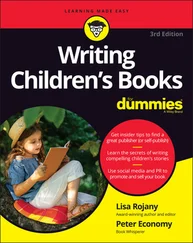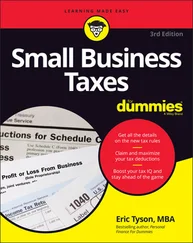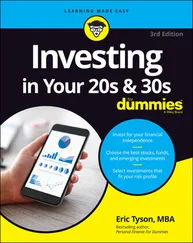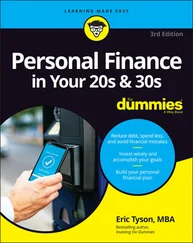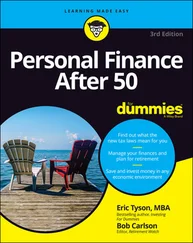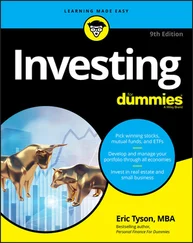Borrow from nature, not from the future
It’s a big question: How do we humans maintain abundance and a high standard of living while also eliminating the waste and pollution associated with that effort? The first step in successfully answering this question lies in not assuming that being smart about how we manage our resources means that we will suffer and end up with less. The whole intent of the circular economy is to be smart in ways that help us obtain more and pollute less. To do this will require us to discover how to pair innovative manufacturing with minimal externalized costs. But at the end of the day, the way we transition to a circular economy is to borrow from nature, not from our future.
 It’s critical to always use nature as a perfect example of how a circular economy could work and not forget that we are a part of nature, not separate from it. In nature, waste will always become food for another system. By mimicking this via a circular economy, we can continue to meet all of our wants and needs without being fearful of the negative impacts of acquiring those wants and needs. Transforming a linear economy to a circular economy is a completely different approach to consumption. Within a circular economy, the slogan Reduce, Reuse, Recycle is misleading. We’ve all heard this ecofriendly mantra, but it only applies within a linear economy because it was developed under the premise that waste and pollution will always exist in civilizations. This notion was derived from the Industrial Revolution, where waste and pollution act as a defining variable. We need to realize, however, that the take-make-waste model will be the end of modern civilization if we don’t evolve to align with the natural systems we depend on. To transition the linear systems we’ve developed into circular systems, the natural world must act as our primary model.
It’s critical to always use nature as a perfect example of how a circular economy could work and not forget that we are a part of nature, not separate from it. In nature, waste will always become food for another system. By mimicking this via a circular economy, we can continue to meet all of our wants and needs without being fearful of the negative impacts of acquiring those wants and needs. Transforming a linear economy to a circular economy is a completely different approach to consumption. Within a circular economy, the slogan Reduce, Reuse, Recycle is misleading. We’ve all heard this ecofriendly mantra, but it only applies within a linear economy because it was developed under the premise that waste and pollution will always exist in civilizations. This notion was derived from the Industrial Revolution, where waste and pollution act as a defining variable. We need to realize, however, that the take-make-waste model will be the end of modern civilization if we don’t evolve to align with the natural systems we depend on. To transition the linear systems we’ve developed into circular systems, the natural world must act as our primary model.
Consider a tree, for example. A single tree can produce thousands of pieces of fruit in a single season. Even though not every single piece of fruit will be harvested to eat, there’s an abundance of produce. The tree doesn’t dictate how much fruit it produces based on the demand of the systems around it, because it doesn’t have to. There’s no downside to abundance in the natural world. The extra fruit isn’t wasted, however — it’s consumed by birds and other creatures who then spread the seeds to produce more trees. Whatever the future of the fruit may be, wherever it falls, it cycles back into the system to encourage the production of more fruit the following year. It doesn’t do it alone, either; a wide array of insects, fungi, chemicals, and minerals is involved in this process. The tree itself isn’t controlling everything, but instead relies on a diverse network of partnerships with the surrounding environment.
We can take this model of resource management and begin to translate it to whatever lifecycle we’re trying to transition from linear to circular. Our product is the fruit, our distribution agents are the birds, our process partners are the insects and fungi, and so on. With this framework established, it’s quite easy to figure out where the gaps are. When the product isn’t purchased, do we have necessary partners involved who can take that unused material and produce something from it that will further strengthen our operations? Can our seeds be shared to create opportunities for greater levels of production? Whatever waste is developed within the business needs to be seen as potential nourishment for another system rather than simply discarded to the landfill.
The industrial revolution took a small amount of time to develop its waste management functionality, when compared to the natural environment. Mother Nature has had much more time to fine-tune the process and reach a waste-free status. So rather than spend billions of dollars a year on research-and-development efforts, why are businesses not instead spending that same amount of money by studying how the natural world functions? Imagine if there were a way to design our world like Mother Nature has designed her own.
It turns out that there is a way to design our world so that it functions more like our natural world. It’s called biomimicry , a scientific approach to extracting the ideas and design concepts from the natural world to adapt and apply them to human systems. (We mention biomimicry here, but there's more on the subject in Chapter 3.)
 The intent of this section is not to convince you to toss aside the Reduce, Reuse, Recycle mantra and begin ignoring altogether the impact you have. By all means, reducing, reusing, and recycling are all critical components of the circular economy. But you also need to focus on the other actions that will be required in order to shift the linear ways of the world to a circular method. Check out Chapter 12for more details on how this would work.
The intent of this section is not to convince you to toss aside the Reduce, Reuse, Recycle mantra and begin ignoring altogether the impact you have. By all means, reducing, reusing, and recycling are all critical components of the circular economy. But you also need to focus on the other actions that will be required in order to shift the linear ways of the world to a circular method. Check out Chapter 12for more details on how this would work.
 Not sure how to fix a problem? That’s okay — you probably don’t need to come up with the solution all on your own. There’s a good chance something else in nature has dealt with the same issue and has come up with a solution. So, the next time you’re trying to figure out how best to capture water in the desert, look up the darkling beetle. If you need to design a building that utilizes natural ventilation, check out how termites build their mounds. If you need an answer to a problem, see how others in nature have solved the same problem. This is biomimicry at its best.
Not sure how to fix a problem? That’s okay — you probably don’t need to come up with the solution all on your own. There’s a good chance something else in nature has dealt with the same issue and has come up with a solution. So, the next time you’re trying to figure out how best to capture water in the desert, look up the darkling beetle. If you need to design a building that utilizes natural ventilation, check out how termites build their mounds. If you need an answer to a problem, see how others in nature have solved the same problem. This is biomimicry at its best.
Waste = Food: Redefining Disposal
We have only one planet to work with. Despite its being a relatively big planet compared to the size of human beings, we still have only one planet — and just one set of resources. In this world of limited resources, it’s becoming more and more apparent that the way we manage these resources needs to change in order for us to continue to support the demands of the global population. As populations continue to rise, so does the negative impact we humans have on the world around us. Although we have gotten better at increasing our efficiency in many sectors — energy, for example — the reality is that the global economy is still extremely inefficient and has an end date if a transformation doesn’t occur soon. For us to continue to sustain our lives, our waste needs to be seen as a valuable resource rather than a discarded item.
The global economy has done a decent job of developing more efficient methods, but within specific areas, not across different areas. Take a production of a bottle of Coke and the shipping materials required to deliver that bottle of Coke to retailers. The manufacturers of Coca-Cola have surely scaled their production processes efficiently to maximize their returns while minimizing their losses. As for shipping these products, they have surely determined the optimal level of packaging required to deliver these bottles unscathed to their retailers. However, the right questions haven’t been asked about the connection between these two elements of the lifecycle. Is there a kill-two-birds-with-one-stone opportunity here? Of course there is! A large percentage of Coca-Cola is composed of water. Water is readily available in every household, in private buildings as well as public ones. So why not eliminate water from the recipe initially and simply have the consumer add it themselves? Doing so would reduce the costs of producing Coca-Cola and would greatly reduce the amount of packaging required to deliver the product to the customer.
Читать дальше
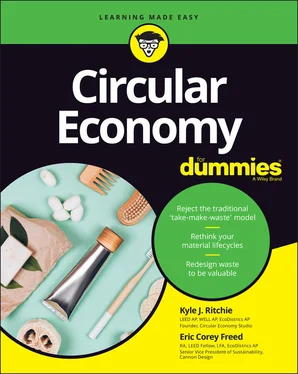
 It’s critical to always use nature as a perfect example of how a circular economy could work and not forget that we are a part of nature, not separate from it. In nature, waste will always become food for another system. By mimicking this via a circular economy, we can continue to meet all of our wants and needs without being fearful of the negative impacts of acquiring those wants and needs. Transforming a linear economy to a circular economy is a completely different approach to consumption. Within a circular economy, the slogan Reduce, Reuse, Recycle is misleading. We’ve all heard this ecofriendly mantra, but it only applies within a linear economy because it was developed under the premise that waste and pollution will always exist in civilizations. This notion was derived from the Industrial Revolution, where waste and pollution act as a defining variable. We need to realize, however, that the take-make-waste model will be the end of modern civilization if we don’t evolve to align with the natural systems we depend on. To transition the linear systems we’ve developed into circular systems, the natural world must act as our primary model.
It’s critical to always use nature as a perfect example of how a circular economy could work and not forget that we are a part of nature, not separate from it. In nature, waste will always become food for another system. By mimicking this via a circular economy, we can continue to meet all of our wants and needs without being fearful of the negative impacts of acquiring those wants and needs. Transforming a linear economy to a circular economy is a completely different approach to consumption. Within a circular economy, the slogan Reduce, Reuse, Recycle is misleading. We’ve all heard this ecofriendly mantra, but it only applies within a linear economy because it was developed under the premise that waste and pollution will always exist in civilizations. This notion was derived from the Industrial Revolution, where waste and pollution act as a defining variable. We need to realize, however, that the take-make-waste model will be the end of modern civilization if we don’t evolve to align with the natural systems we depend on. To transition the linear systems we’ve developed into circular systems, the natural world must act as our primary model. Not sure how to fix a problem? That’s okay — you probably don’t need to come up with the solution all on your own. There’s a good chance something else in nature has dealt with the same issue and has come up with a solution. So, the next time you’re trying to figure out how best to capture water in the desert, look up the darkling beetle. If you need to design a building that utilizes natural ventilation, check out how termites build their mounds. If you need an answer to a problem, see how others in nature have solved the same problem. This is biomimicry at its best.
Not sure how to fix a problem? That’s okay — you probably don’t need to come up with the solution all on your own. There’s a good chance something else in nature has dealt with the same issue and has come up with a solution. So, the next time you’re trying to figure out how best to capture water in the desert, look up the darkling beetle. If you need to design a building that utilizes natural ventilation, check out how termites build their mounds. If you need an answer to a problem, see how others in nature have solved the same problem. This is biomimicry at its best.
